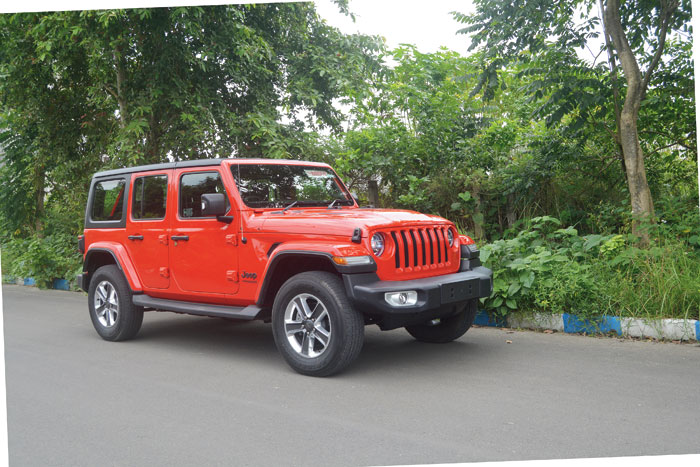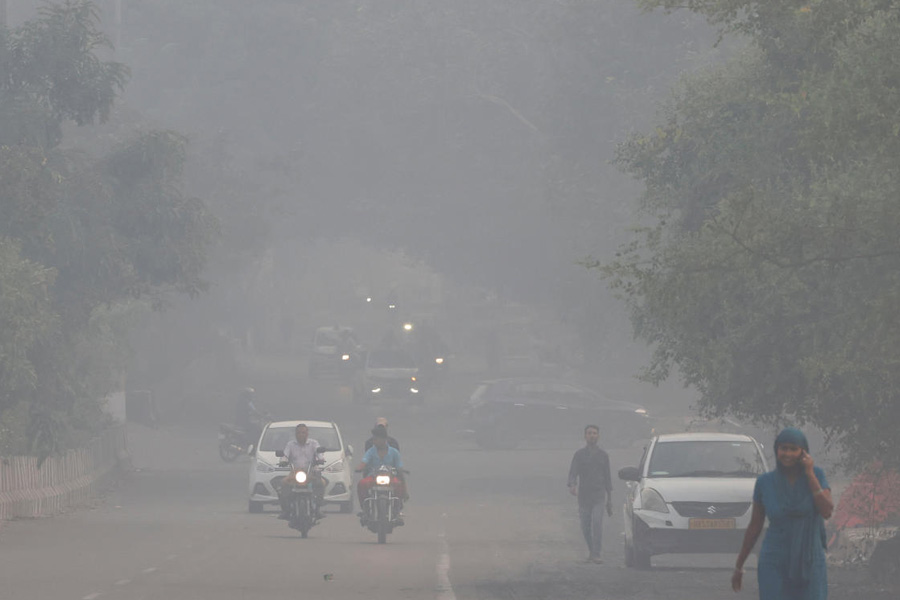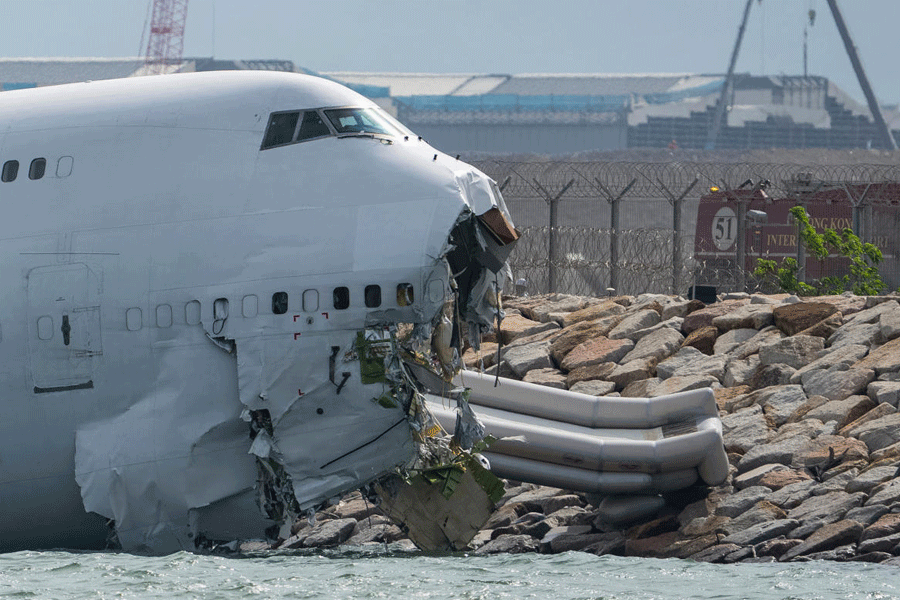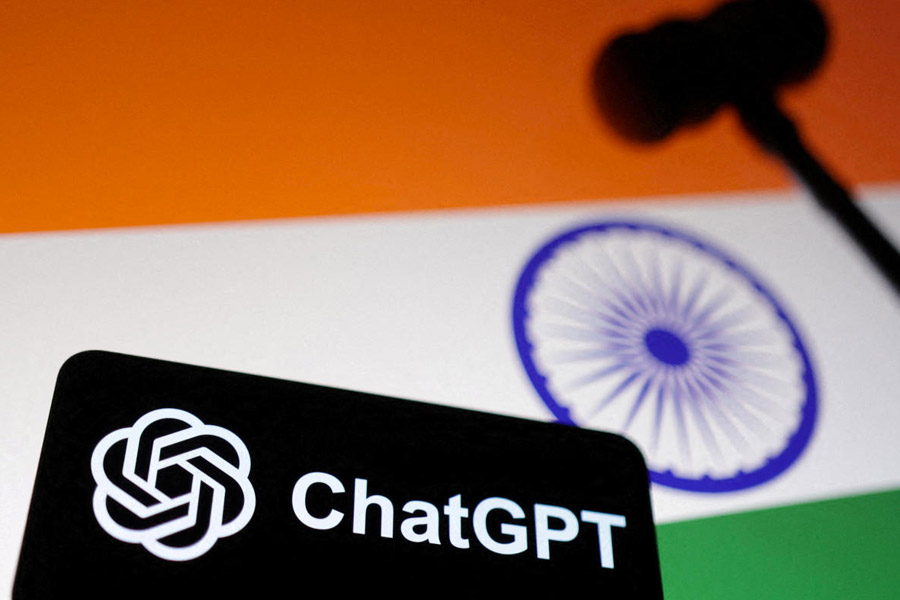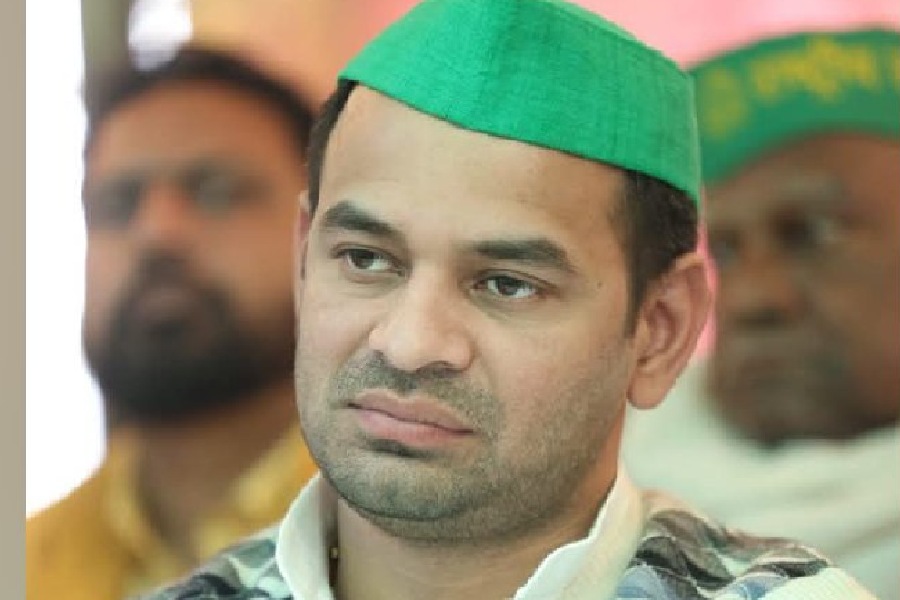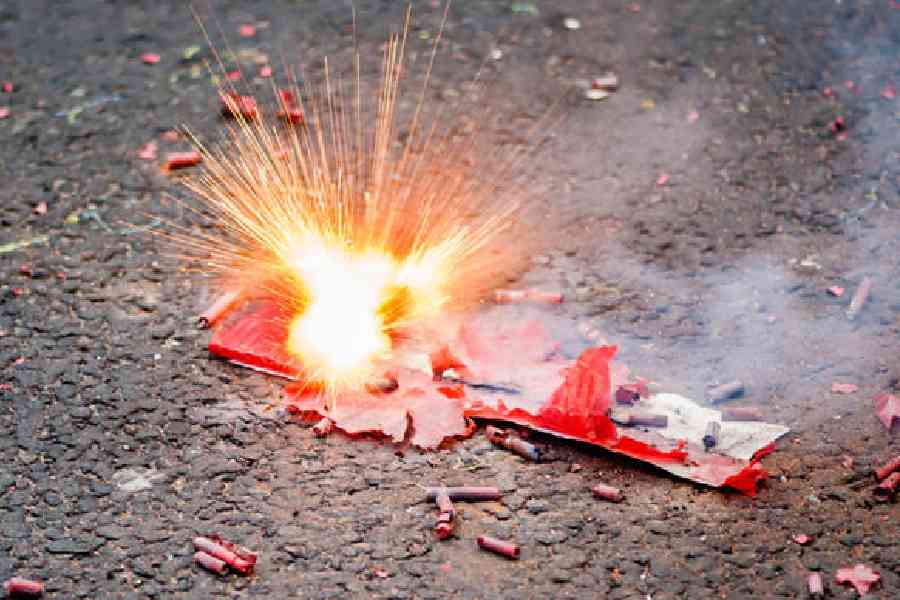There are very few vehicles in the world that are so distinctive and universally recognised that they would have the chutzpah even to think of hitting the market without a badge or name on the front end. The new Jeep Wrangler, which has just been launched in India, has done exactly that! There is the signature seven-slat Jeep grille, round headlamps, tapering bonnet and flared fenders that Jeep thinks should be enough for people to spot the vehicle as a Wrangler.
The current vehicle — India has got the five-door Unlimited version — is the fourth generation to carry the Wrangler name that was first used in the mid-’80s. But its maker looks rather keen to trace its lineage all the way back to the military Jeep that was first made back in 1941 and the civilian Jeeps (CJ series) that followed — ‘Since 1941’ appears on the screen when the vehicle is being started up.
The exteriors
Now coming back to the absence of the name in the front end, it stands to reason that there would not only be Jeep Wrangler design cues up front, but also in the overall look of the vehicle — flat slabby sides, exposed door hinges, trapezoidal wheel arches, squarish tail lamps, two-part rear door with the spare wheel bolted on it, and so on.
So does that mean that this model is more or less the same as the old one? Hell, no! Globally, this current generation comes a decade after the last one and the tech advancements of those 10-odd years have been incorporated into the latest version — designated JL — while maintaining the overall look of the vehicle.
For starters, the JL is 130mm longer, 17mm wider and stands 9mm taller than the previous one. Ground clearance has also been upped from the earlier 186mm to the current 215mm.
The grille tips its hat to the gods of aerodynamics with a subtle backward bend and there are scoops on the bonnet now and a couple of recesses and vents behind the fenders too, probably to improve air flow and reduce fuel consumption. The windshield (it can still be folded flat as in the past), that used to be nearly upright, is now somewhat more raked for the same reason.
The lights are all LED. There are simple horizontal-strip DRLs and turn indicators stacked one above the other on the fenders. The square tail lights have a sort of hourglass LED in them. The roof can be removed entirely and the mechanism has now been simplified. A little kit comes with every tool you need to remove the roof, take off the doors or fold down the windscreen. In fact, there are a neat set of marked holes in the boot for storing each of the nuts taken off in the process.

The view out is commanding and the cabin is all quality leather and hard-wearing plastic and a good place to be in Abhijit Mitra
The interiors
Not only is the Wrangler longer overall, the wheelbase is now 61mm longer too. That has translated into more space inside, particularly at the back. In fact, the backrest in the rear is now at less of a military angle and better suited for civilian use. We would actually have liked a broader squab as well for some more thigh support, but that hasn’t come, but it is possible to actually stretch the legs out under the front seats. So that helps.
There are certain things unique to the Wrangler like the stack of window opening switches on the centre consoles front and rear. The SUV also doesn’t come with things like rain sensing wipers, probably because the windscreen folds down. The rear speakers go on the anti-roll bars because the doors can be taken off. And the sub-woofer is waterproof since it stays exposed once the roof is taken off. One can put on a hard top or soft top or leave the vehicle as open as he wants.
One has to climb into a Wrangler. But everything falls neatly to hand thereafter. The dashboard is vertical and the instruments facing the driver are easy to read on the go. There is the de rigueur infotainment screen in the centre, an 8.4-inch one, that comes with a unique drag-and-drop function, much like a smartphone home screen. A thick rubber surround should help keep the water from seeping in, should one drive with the top open.
The footwell is quite narrow, the steering adjustable for rake and reach, and the seat for height. So one can find a comfortable driving position. Also, the bolstering of the seats is excellent and should prove helpful for extended periods off-roading or long-distance driving.
This is one vehicle where there are loads of sockets to plug in or charge electronic devices in the car.
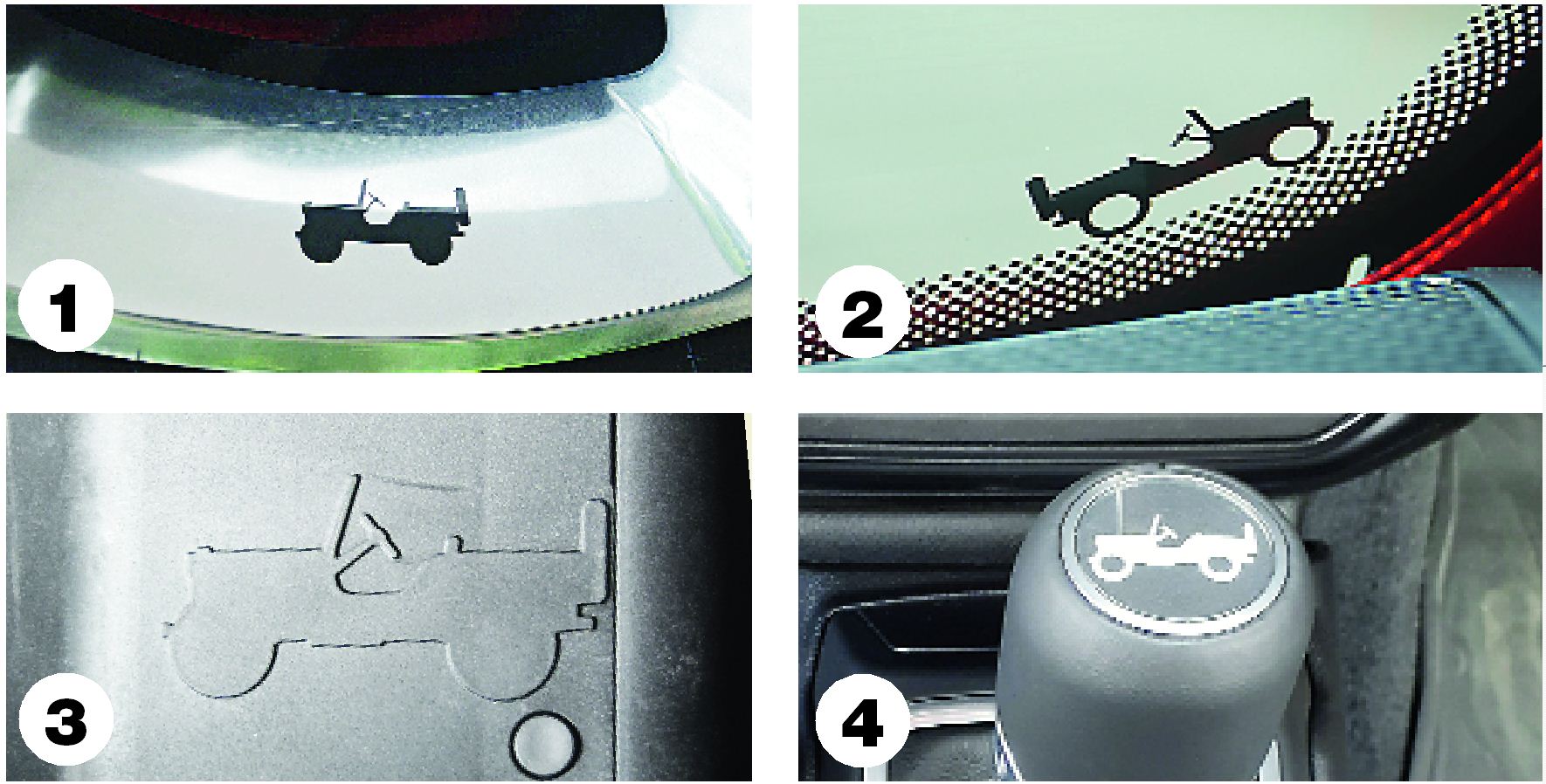
There are little Jeeps all over the place — on the (1) wheel rims, (2) windshield, (3) floor mat and (4) gear shift knob Abhijit Mitra
There is the usual complement of 12V socket and three standard USB ports. Additionally, there are three USB-C ports and a 230V, 150Amp three-pin AC socket! The first time we’ve seen one of these.
The drivetrain
The new Wrangler comes with a 2-litre, inline four-cylinder petrol engine only; there’s no diesel on offer any more. This is a turbocharged unit that, compared with the earlier 3.6-litre Pentastar V6, makes just about 12hp less but 53Nm more of torque at a much lower engine speed, making hitting the power band much easier. Power delivery is quite linear and the turbo lag isn’t significant. While this is not a very fast vehicle, once the accelerator is floored, it is quite eager to rev up and run with the lower-end torque coming through quite smoothly. In fact, the power delivery should be quite easy to control in offroad situations.
What has made a big difference, no, huge difference, is the gearbox. The current eight-speed unit is a vast improvement over the earlier five-speed one, which was probably good for off-roading but not really the best unit to have for road use. Now, the shifts are quicker, smoother and, mostly, one doesn’t even feel them.
What sets the Wrangler apart from most other SUVs is its off-roading ability. In fact, a lot of this SUV is conceived around that idea, starting with ground clearance, the fact that it still uses a rugged body-on-chassis construction rather than a monocoque, and so on.
And nothing encapsulates that spirit more than its SelecTrac 4WD system. This can sense which wheel is losing traction and send more torque to it so that it can regain its grip and help the vehicle move forward. A lever lets the driver choose between two-wheel drive, 4H Part-Time, which sends the torque equally to the front and rear wheels, and 4H Auto, where the vehicle decides where the torque needs to go. And then, of course, there is the 4L, or low ratio, that lets it crawl while off-roading.
The drive
It would have been difficult if one drove the previous generation Wrangler to figure out the drive on this one. That was a vehicle one typically bought knowing that he would be making a compromise in terms of smoothness for offroad capabilities. Not any more. The Wrangler’s drive is way smoother now on the road, which is where most of those who buy this SUV do the bulk of their driving.
Most of the lumpiness that one associated with it, mainly because of its almost lethargic engine-gear combination, is gone now. Yes, particularly in slow traffic, its ladder-frame construction sometimes shows through, but one doesn’t see too much of it at higher speeds. In fact, even though it sits high on the road, handling at speed is very poised and it is very stable.
The big wheels and radial tyres combination works well. The steering is a electronic-hydraulic unit now, but feedback is there all the time, something that offroad drivers will love. Also, there’s virtually no vagueness about it. The seats, too, give a good idea of what’s going on under the wheels. The smaller turning radius makes driving it less of a chore. The bottomline is that this drives like what we have come to expect from SUVs nowadays.
But the offroad capabilities are all there. Apart from the gearing, it is equipped to wade at speeds of up to 8kmph in 2.5feet of water, something softer SUVs will have a hard time matching. Plus, it can climb up steeper slopes now and go over worse patches — think rocks.
The call
If one looks at it in terms of price, the Jeep Wrangler compares with offerings from Audi, BMW, Jaguar and Mercedes, among others. But, it actually is a different kettle of fish altogether. Just take one instance: nothing else would let you go from hard top to soft top at home. Or compare the off-roading capablities of other vehicles at that price range. In fact, if going where there is no road is even somewhere in the plan, then this is clearly the one to go for. And now the road manners are pretty good too. Rs 63.94 lakh isn’t a very small price to pay, but rest assured that the Wrangler is going to make the payback worth it.

